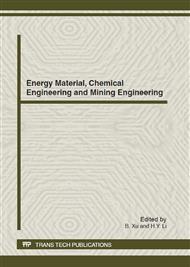[1]
General Office of the State Council. Document GFB.
Google Scholar
[2007]
Energy-saving Generation Dispatch Regulation [EB/OL]. http: /www. sdpc. gov. cn/zcfb/zcfbqt/2007qita/t20070828 _156042. htm.
Google Scholar
[2]
Zhu Keding, Song Yihang, Tan Zhong-fu, et al. China wind power integration status quo and its benefit to energy saving and emission reduction[J]. Electric Power, 2011, 44(6): 67-70.
Google Scholar
[3]
Shen Youxing, Liu Lin, Zeng Ming. Social benefit evaluation models for wind power and their applications[J]. East China Electric Power, 2011, 44(6): 67-70.
Google Scholar
[4]
Li Junfeng, Shi Pengfei, Gao Hu. China Wind Power Outlook 2010[M]. Haikou: Haikou Press, 2010: 87-88.
Google Scholar
[5]
Liao Gwo-Ching. A novel evolutionary algorithm for dynamic economic dispatch with energy saving and emission reduction in power system integrated wind power[J]. Energy, 2011, 36(2): 1018-1029.
DOI: 10.1016/j.energy.2010.12.006
Google Scholar
[6]
Li Zhi, Han Xueshan, Yang Ming, et al. Power system dispatch considering wind power grid integration[J]. Automation of Electric Power Systems, 2010, 34(19): 15-19.
Google Scholar
[7]
Wang Cai-xia, Qiao Ying, Lu Zong-xiang. A method for determination of spinning reserve in wind-thermal power systems considering wind power benefits[J]. Automation of Electric Power Systems, 2012, 36(4): 16-21.
DOI: 10.1109/pesgm.2012.6344879
Google Scholar
[8]
K. Chandrasekaran, S. Hemamalini, Sishaj P. Simon, et al. Thermal unit commitment using binary/real coded artificial bee colony algorithm[J]. Electric Power Systems Research, 2012, 84(1): 109-119.
DOI: 10.1016/j.epsr.2011.09.022
Google Scholar
[9]
Gaing ZL, Lin GN. Unit commitment with security assessment using chaotic PSO algorithm[J]. Journal of Circuits Systems and Computers, 2011, 20(7): 1357-1376.
DOI: 10.1142/s021812661100792x
Google Scholar
[10]
Carrion M, Arroyo J M. A computationally efficient mixed-integer linear formulation for the thermal unit commitment problem[J]. IEEE Transactions on Power Systems, 2006, 21(3): 1371-1378.
DOI: 10.1109/tpwrs.2006.876672
Google Scholar


